There isn’t much in the way of print we can’t do. As technology and client requirements have changed so too have our techniques and processes. Because we believe in innovation, we can print just about any design on any material and we take a great deal of pride in that fact.
We also take a great deal of pride in how we care for our clients and support them in creating an incredible finished product. With that in mind, here’s our guide to preparing your document for print.
The Basics
The first step in any print job should be devising the specification. Know what you’re printing, to what size and what material. These factors will dictate whether or not you’re working to RGB or CMYK. The vast majority of the time you’ll be working to the latter but some large format print will require RGB.
The easiest thing to do is check with us and we can advise you accordingly. It’s really important to get this right before you start designing as it’s not something you can change part way through.
It’s also important to know how you want the colour set up as this will impact on set up and cost. For example, whilst a flyer should be full (4) colour on the front and back, a postcard could be full colour on the front or single colour (black) on the reverse.
This principle is even more important on large print.
Layout
When designing anything intended for print you need to consider the trim line, the live area, the bleed area and crop marks. These four things, if not considered, can result in delays or entire redesigns.
Here’s an explanation of each:
Trim Line
The trim line denotes the finished size of the piece. Assume everything outside of that area will be cropped or is otherwise non-existent.
Live Area
This is the area that you want your design and important information to sit within. Trim lines and bleed can vary depending on the size and shape of what you’re creating so make sure you have this marked out in your document before you begin.
Bleed Area
The more bleed you can give the better but we’ll tell you the minimum bleed you need to allow before you send the artwork across.
Crop Marks
The crop marks, quite simply, indicate where the cuts are made on anything cut to size.
Where possible get in touch with us before you start your design so we can discuss your requirements and advise you of bleed minimums as well as any other consideration dependent on the material, machine and the kind of finish you want.
Designing Up to the Trim Line
Some designs feature edge to edge image elements or copy which can sometimes lead to a small gap when the finished product rolls of the production line. To prevent this make sure those elements cross over the trim line.
Needless to say, expanding text over the trim line would result in the text increasing in size and first and last letters being cropped which wouldn’t look right at all. What we recommend is extending the first and last letters over the trim line which will give you the edge to edge design you’re looking for.
The technique varies but we would rasterize the text and pull the paths beyond the bleed.
High-Resolution Images
High quality commercial printing requires higher resolution images than those viewed on your screen. The resolution does vary depending on the size of what you’re printing but the higher the resolution the better the end result.
To keep things simple make sure all the images you create or use are at least 255 pixels per inch (ppi). This means everything will look exactly as it did on your screen once it’s printed.
We recommend you use high-resolution images for everything, including the smaller elements of your design as if they need sizing up they won’t degrade as the pixels won’t be stretched out over a bigger space.
If you use InDesign, make use of the info panel tool which will tell you both image resolution and the effective resolution. So, for example a 300 ppi image scaled to 50% of its original size is actually 600 ppi. This will allow you to determine to the extent you can size and resize images without compromising quality.
Pre Flight Checks
It’s so important to pre flight your document before it reaches us. This involves checking file to make sure it matches our requirements (bleed etc) and everything is exactly as you want it. The colours are correct and any copy has been thoroughly proofread.
It also allows you the opportunity to make sure all assets – images etc – are all linked/embedded.
Set your PDF
PDFs are great to work from when created properly as they contain all the graphics, fonts etc that make up the document ready for printing. It’s a digital master file, essentially.
We will provide you with any specific requirements before you send the finished product over to use but just ensure that call the crop marks etc are set correctly, all images and fonts are linked and then take a few minutes to review the finished product for any colour glitches or formatting errors.
Once you’re happy, send over the file and we’ll take care of the rest.


